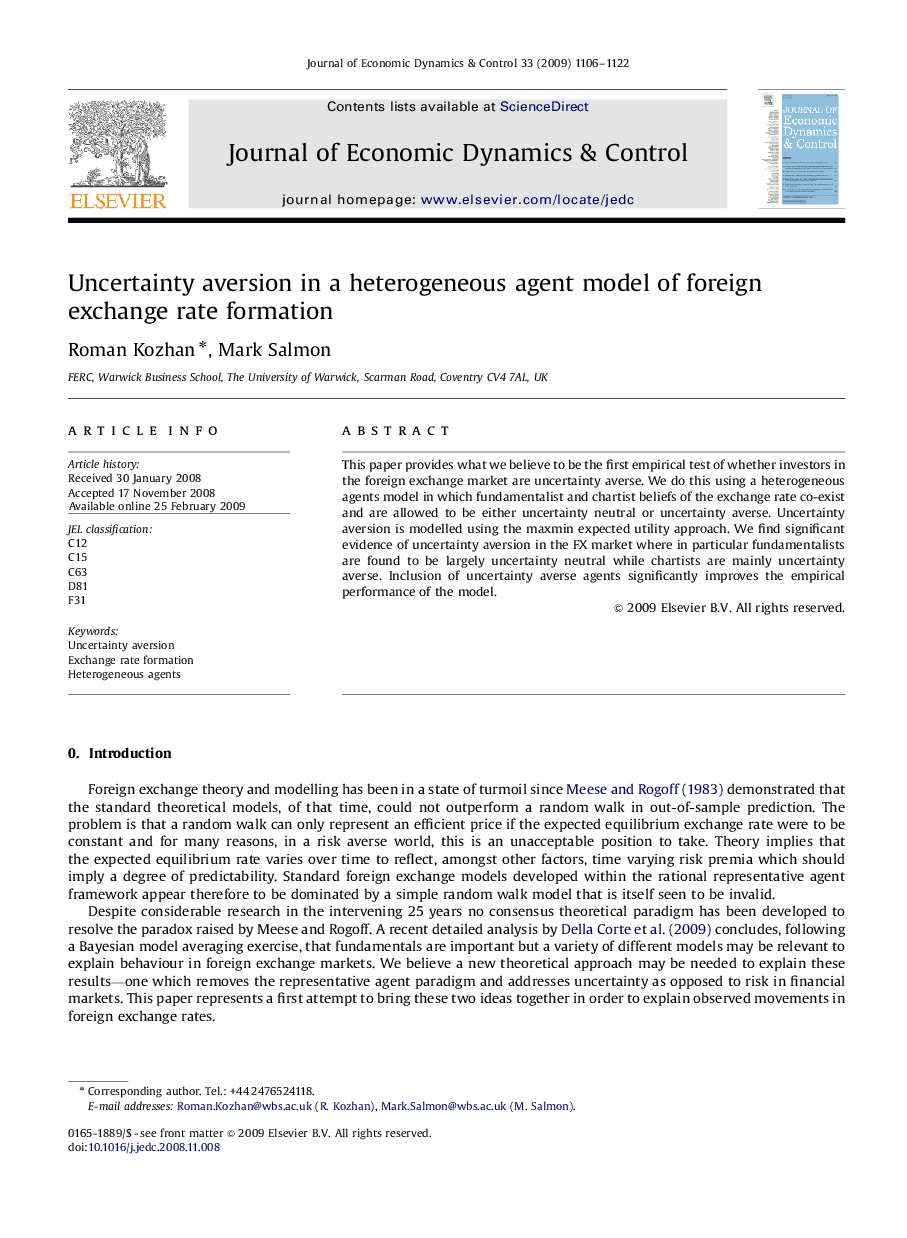| Article ID | Journal | Published Year | Pages | File Type |
|---|---|---|---|---|
| 5099087 | Journal of Economic Dynamics and Control | 2009 | 17 Pages |
Abstract
This paper provides what we believe to be the first empirical test of whether investors in the foreign exchange market are uncertainty averse. We do this using a heterogeneous agents model in which fundamentalist and chartist beliefs of the exchange rate co-exist and are allowed to be either uncertainty neutral or uncertainty averse. Uncertainty aversion is modelled using the maxmin expected utility approach. We find significant evidence of uncertainty aversion in the FX market where in particular fundamentalists are found to be largely uncertainty neutral while chartists are mainly uncertainty averse. Inclusion of uncertainty averse agents significantly improves the empirical performance of the model.
Related Topics
Physical Sciences and Engineering
Mathematics
Control and Optimization
Authors
Roman Kozhan, Mark Salmon,
